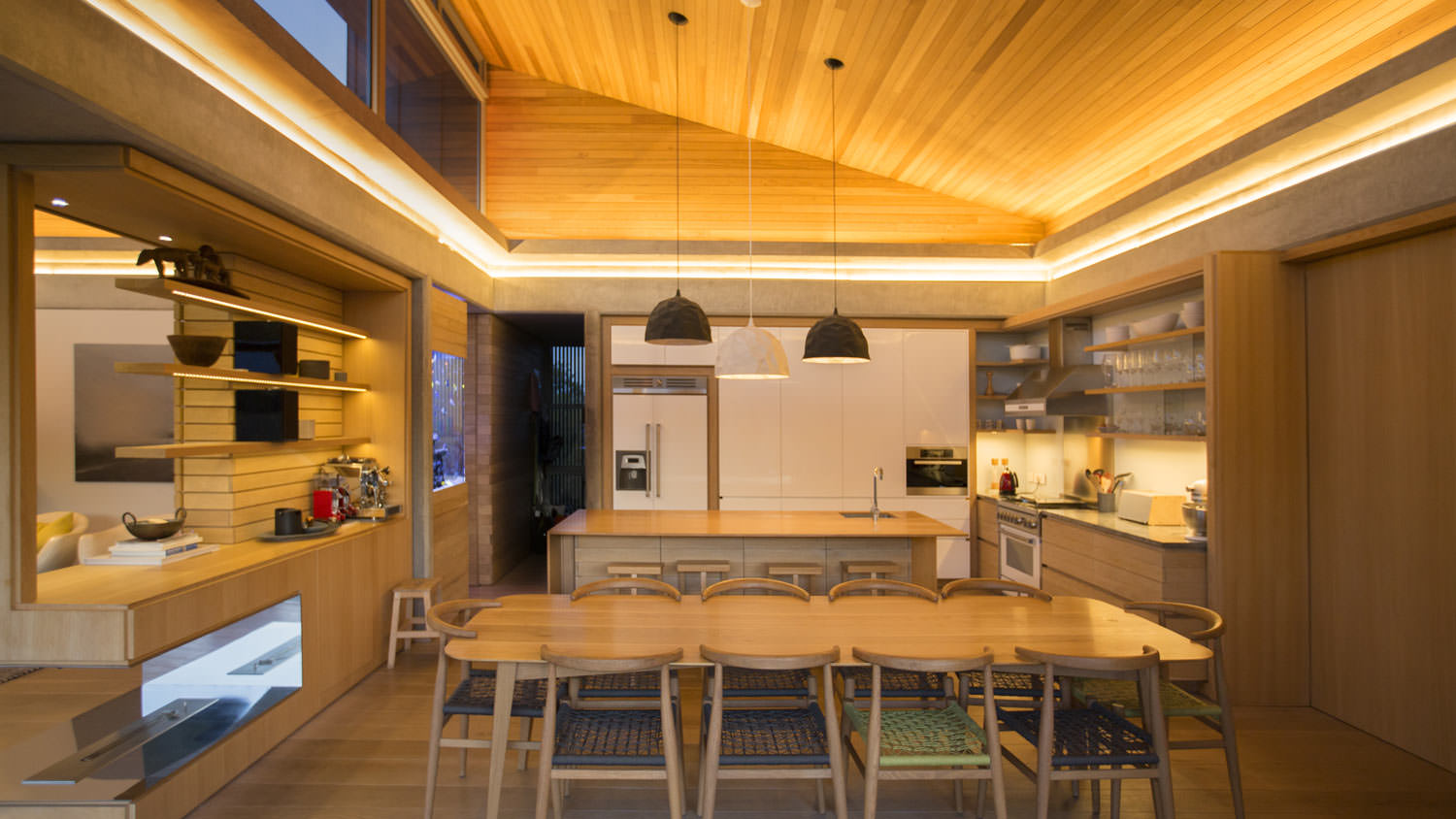Is a Vaulted Ceiling Right for You? Here’s What to Consider
Here are some things to consider with this lofty upgrade


The typical height of a ceiling in a home is 9 feet, but vaulted ceilings can take things up a notch—literally. While these domed or arched ceilings can certainly be the height of sophistication in home design, it’s important for you to understand the pros and cons.
The Advantages of Vaulted Ceilings
Let’s take a look at some of the pros of vaulted ceilings in a home:
There’s More Natural Light
Vaulted ceilings allow for more places for sunlight to go when it streams through a window—that’s why many high ceilings also have a skylight installed. On a fair-weather day, you might not have to flip on any light switches at all until sundown.
The Space Seems Larger
Vaulted ceilings don’t actually tack on more square footage to your home, but the space will seem bigger because the ceilings are that much farther away.
It Creates a Luxurious Look
Look up any high-end real estate listing and you won’t have to read very far before you see a mention of ceiling height. That’s because vaulted ceilings are often the hallmark of luxury properties. This is not to say that your home will automatically be considered a mansion if you have vaulted ceilings in the living room or entryway, but it will certainly make the space look grander.
There’s Even More Room for Improvement
More vertical space also opens you up to more enhancements for the space. This is the time to install that skylight or hang an elegant chandelier that would overpower the room otherwise. Now that there’s room to look up, you give your family and guests a reason to do so!
The Disadvantages of Vaulted Ceilings
But there are some drawbacks to installing a vaulted ceiling you need to know:
They’re Pricey
If you want to add a vaulted ceiling to your existing home, you’re going to have to dig deep into your wallet. Vaulting a ceiling costs anywhere between $16,000 and $24,000. On average, you can expect to pay about $60 per square foot.
They’re a Pain to Maintain

If you have vaulted ceilings, gone are the days of using a step stool to change a light bulb. Or a broom to swipe at a spiderweb in the corner of the ceiling. Or a simple feather duster to clean ceiling fan blades.
When you’ve got vaulted ceilings, you need to think big—and unfortunately, that includes cleaning and maintenance. DIY warriors might have taller ladders for the job, but when it comes to any repairs or touch-ups involving vaulted ceilings, it’s best to call in the pros.
Sound Quality Suffers
When the ceiling is farther away from your music or TV speakers, it takes longer for the sound to bounce back. In a room with vaulted ceilings, you might hear some echoes or have to turn up the volume.
Your Energy Bills Will Increase
Along with those soaring ceilings come soaring energy bills every month. Just as with sound, there is a lot more space for the hot and cold air to go, so it will take longer to warm or cool off a room. Many vaulted ceilings have fans to help out with air circulation.
To conserve energy, you must add adequate insulation to your vaulted ceiling so that you don’t sweat out the summer or freeze up in the winter. In cold climates especially, proper insulation can prevent ice dams from forming on your roof, which can cause considerable damage when left unchecked.
Is a Vaulted Ceiling Right for You?
As with many home design options, there are pros and cons to having vaulted ceilings in your home. Their looks can certainly be dazzling, but it’s important to understand some of their drawbacks so you don’t hit the roof when you get the energy bill or when it comes time to maintain them.





- Cathedral Ceiling vs. Vaulted Ceiling: What’s the Difference?
- 5 Ways You Can Raise Your Ceiling
- 8 Beautiful Types of Ceilings That Will Amp Up Any Room
- How High Is the Average Ceiling? Standard Ceiling Height and Measurement Tips
- A Complete Guide to How to Clean Your Ceilings and Walls
- What Is a Cathedral Ceiling and Is It Right for Your Home?
- What Is a Drop Ceiling? Everything You Need to Know
- 5 Top Tips for Painting a Ceiling
- 7 Ways to Clean High Ceilings Safely
- Painting Ceiling Same Color as Walls: Pros and Cons















